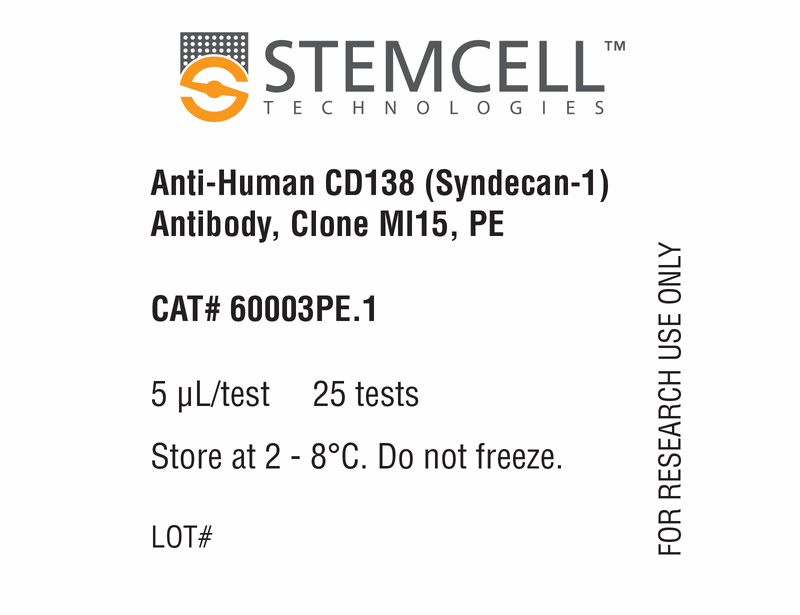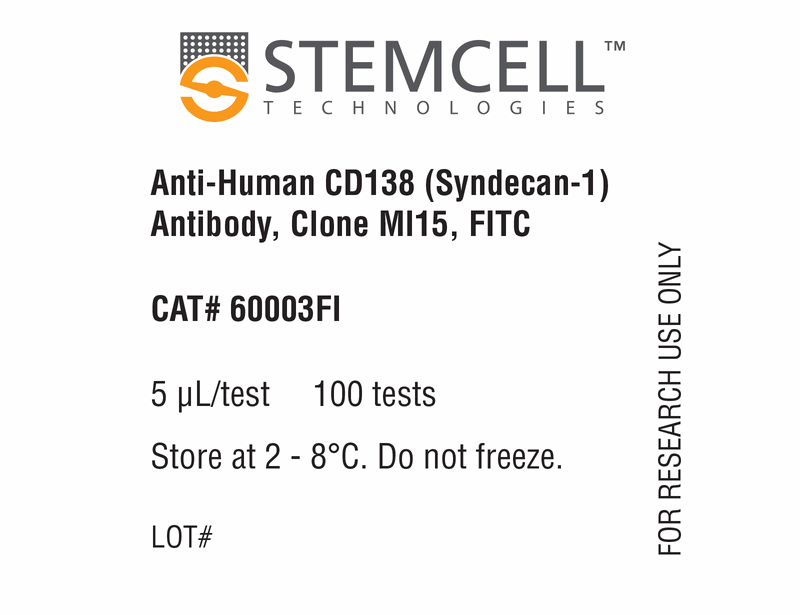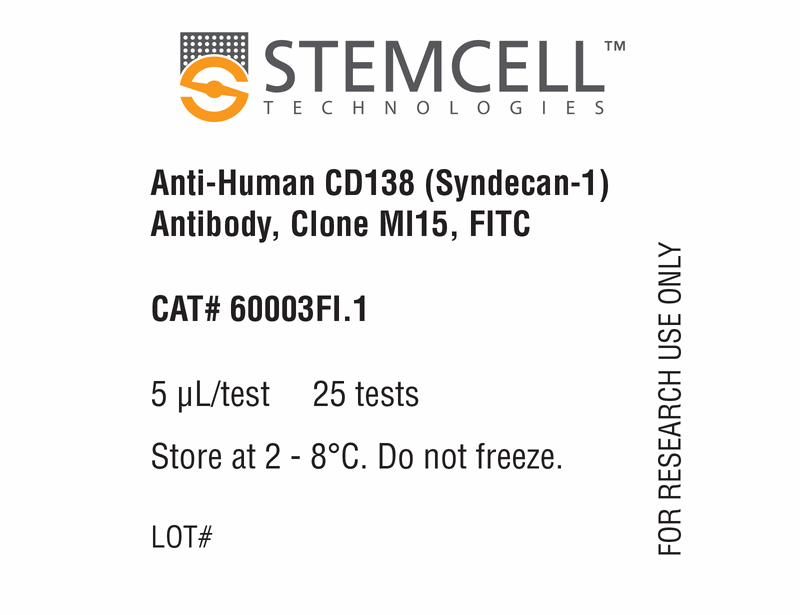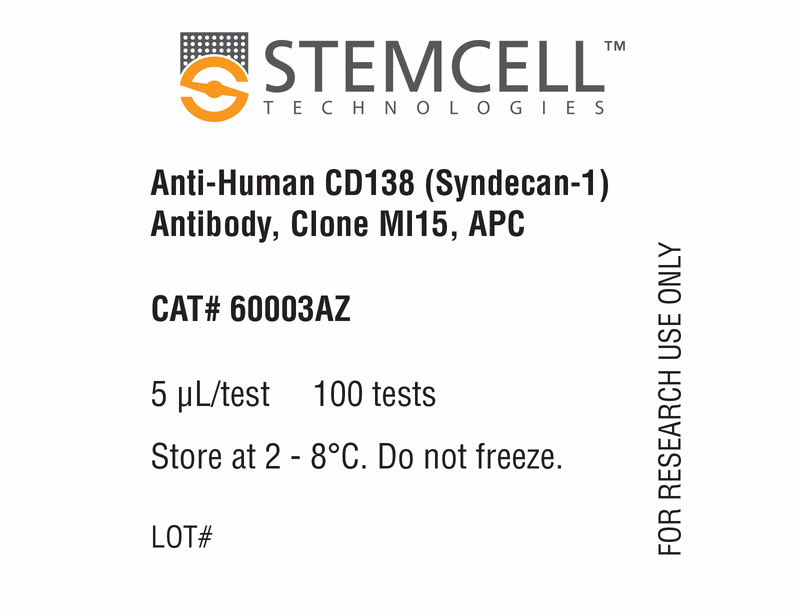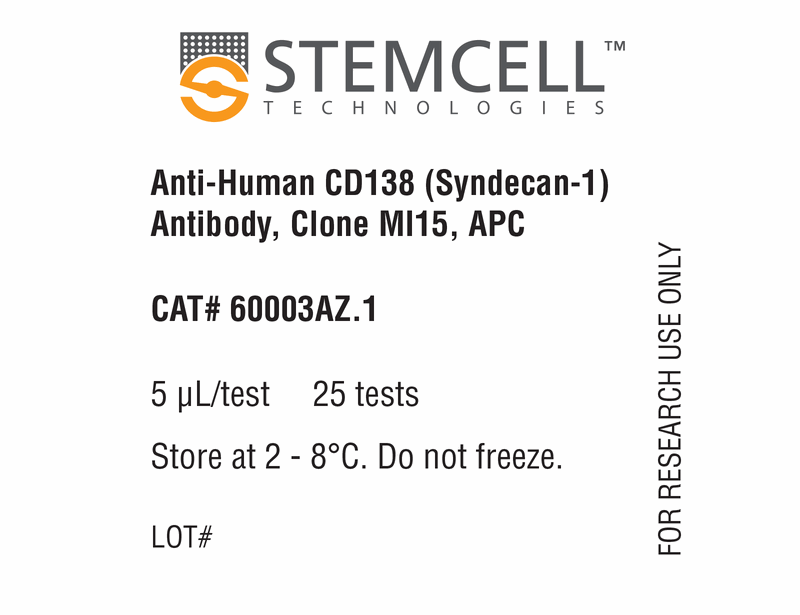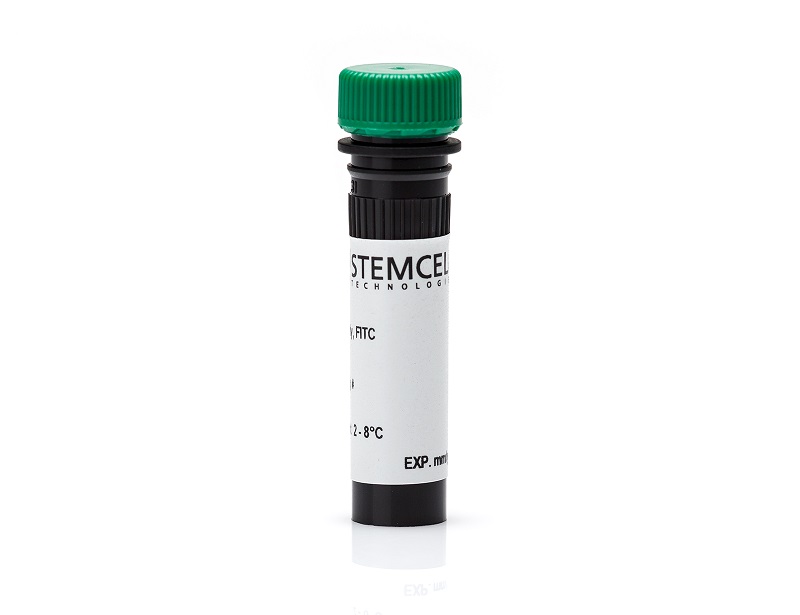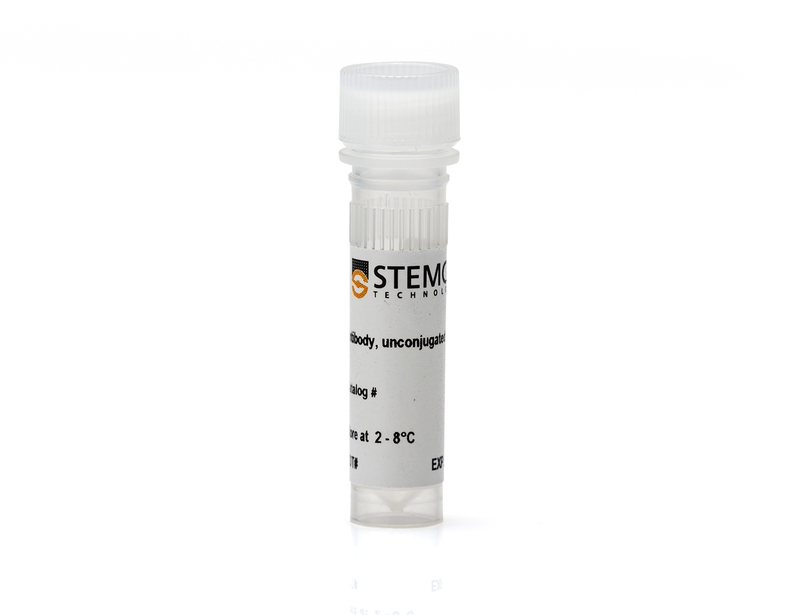概要
技术资料
数据及文献
Data
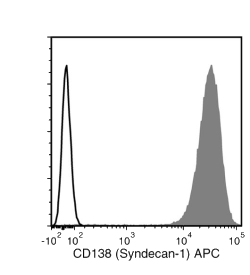
Figure 1. Data for APC-Conjugated
(A) Flow cytometry analysis of human U266 myeloma cells labeled with Anti-Human CD138 (Syndecan-1) Antibody, Clone MI15, APC (filled histogram) or a mouse IgG1, kappa APC isotype control antibody (solid line histogram). (B) Flow cytometry analysis of human U266 myeloma cells isolated with EasySep™ Human CD138 Positive Selection Kit from a mixed population of U266 cells and human peripheral blood mononuclear cells. Cells were labeled with Anti-Human CD138 (Syndecan-1) Antibody, Clone MI15, APC. Histograms show labeling of the starting population containing ~5% U266 cells (Start) and the isolated cells (Isolated). Labeling of the start cells with Mouse IgG1, kappa Isotype Control Antibody, Clone MOPC-21, APC (Catalog #60071AZ) is shown (solid line histogram).
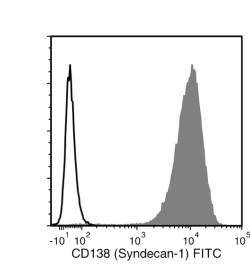
Figure 2. Data for FITC-Conjugated
(A) Flow cytometry analysis of human U266 myeloma cells labeled with Anti-Human CD138 (Syndecan-1) Antibody, Clone MI15, FITC (filled histogram) or a mouse IgG1, kappa FITC isotype control antibody (solid line histogram). (B) Flow cytometry analysis of human U266 myeloma cells isolated with EasySep™ Human CD138 Positive Selection Kit from a mixed population of U266 cells and human peripheral blood mononuclear cells. Cells were labeled with Anti-Human CD138 (Syndecan-1) Antibody, Clone MI15, FITC. Histograms show labeling of the starting population containing ~5% U266 cells (Start) and the isolated cells (Isolated). Labeling of the start cells with Mouse IgG1, kappa Isotype Control Antibody, Clone MOPC-21, FITC (Catalog #60071FI) is shown (solid line histogram).
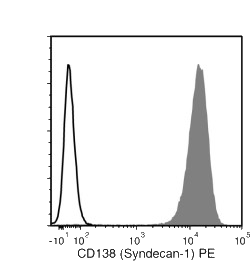
Figure 3. Data for PE-Conjugated
(A) Flow cytometry analysis of human U266 myeloma cells labeled with Anti-Human CD138 (Syndecan-1) Antibody, Clone MI15, PE (filled histogram) or a mouse IgG1, kappa PE isotype control antibody (solid line histogram). (B) Flow cytometry analysis of human U266 myeloma cells isolated with EasySep™ Human CD138 Positive Selection Kit from a mixed population of U266 cells and human peripheral blood mononuclear cells. Cells were labeled with Anti-Human CD138 (Syndecan-1) Antibody, Clone MI15, PE. Histograms show labeling of the starting population containing ~5% U266 cells (Start) and the isolated cells (Isolated). Labeling of the start cells with Mouse IgG1, kappa Isotype Control Antibody, Clone MOPC-21, PE (Catalog #60071PE) is shown (solid line histogram).
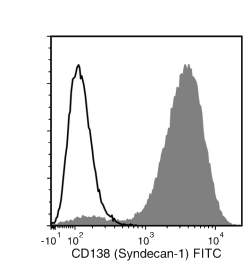
Figure 4. Data for Unconjugated
Flow cytometry analysis of human U266 myeloma cells labeled with Anti-Human CD138 (Syndecan-1) Antibody, Clone MI15, followed by Goat Anti-Mouse IgG (H+L) Antibody, Polyclonal, FITC (Catalog #60138FI; filled histogram) or a mouse IgG1, kappa isotype control antibody followed by Goat Anti-Mouse IgG (H+L) Antibody, Polyclonal, FITC (open histogram).

 网站首页
网站首页

